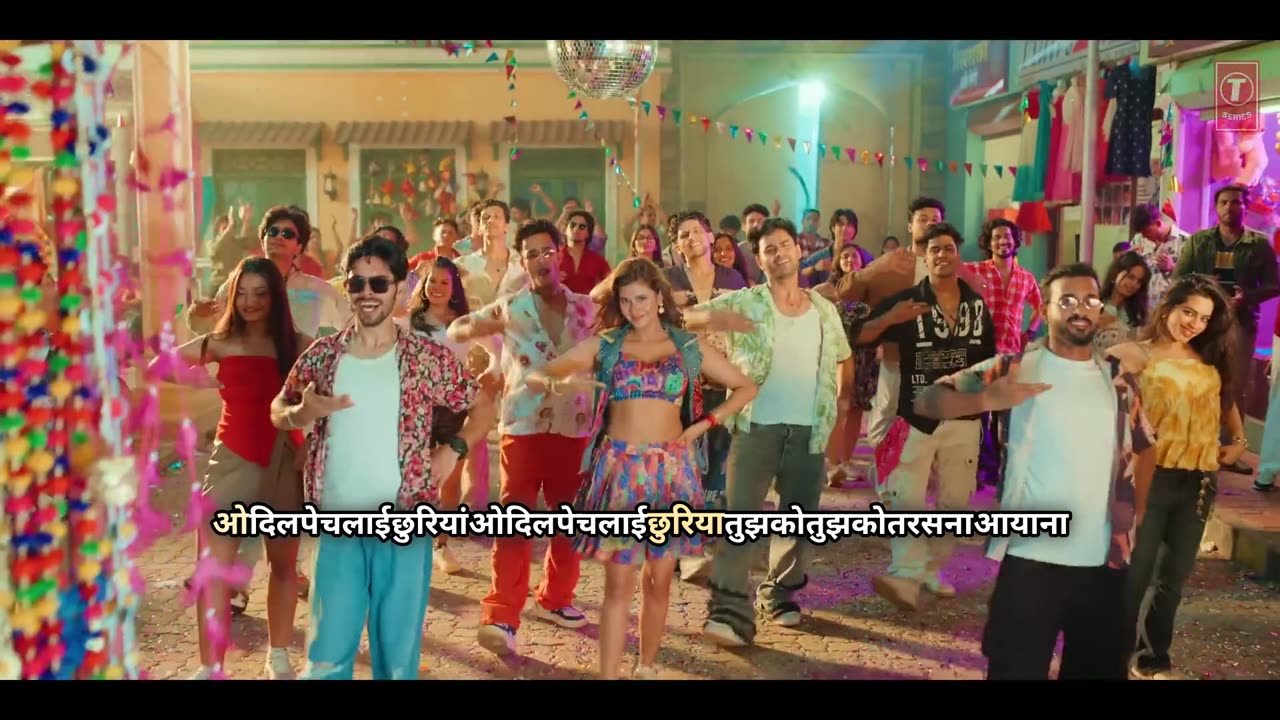Premium Only Content

Dil pe chalai churiya
Dil pe chalai churiya
"Dil Pe Chalai Churiyan" (sometimes transliterated as "Dil Pe Chalayi Churiyan") is a popular phrase in Hindi/Urdu, which translates directly to "You ran knives/daggers over my heart" or "You stabbed my heart with knives/daggers." It's a highly evocative and dramatic expression of intense emotional pain, betrayal, or heartbreak.
While it could be a standalone poetic line, it most famously serves as a significant lyrical element in various Bollywood songs, often appearing as a chorus or a pivotal line that encapsulates the protagonist's suffering. The imagery of "churiyan" (knives/daggers) being "chali" (run over/used) on the "dil" (heart) is incredibly potent, conveying a deep, cutting wound that is not just figurative but feels almost physically inflicted.
Here's a breakdown of the long description, encompassing its various facets:
1. Core Meaning and Emotional Impact:
At its heart, "Dil Pe Chalai Churiyan" signifies profound emotional anguish. It's not just sadness or disappointment, but a feeling of being deeply wounded, betrayed, or having one's trust shattered. The use of "churiyan" suggests a deliberate and painful act, often implying that the person causing the pain was someone close, someone who had the power to inflict such a deep wound. It speaks to a feeling of being metaphorically ripped apart, left bleeding emotionally.
2. Figurative Language and Imagery:
The phrase is a powerful example of metaphor and hyperbole in South Asian poetry and songwriting. The heart is not literally being cut, but the pain is so intense that it feels as if it is. The "knives" or "daggers" represent the hurtful words, actions, or betrayals that have caused this immense suffering. The act of "running" or "wielding" these knives implies a sustained or repeated assault on one's emotions, rather than a single, quick blow.
3. Common Contexts in Songs and Poetry:
* Romantic Heartbreak: This is by far the most common context. The phrase is frequently used when one lover has betrayed, abandoned, or deeply hurt another. It encapsulates the agony of a broken heart, the sting of unfaithfulness, or the despair of unrequited love.
* Betrayal by a Loved One/Friend: Beyond romantic relationships, it can also express the pain of betrayal from a close friend or family member, where trust has been irrevocably damaged.
* Deep Disappointment/Shattered Hopes: In some instances, it might convey the intense disappointment of shattered dreams or hopes, especially when those hopes were tied to another person's actions or promises.
4. Musicality and Delivery:
When set to music, the phrase "Dil Pe Chalai Churiyan" is almost always delivered with immense pathos and intensity. Singers often infuse it with raw emotion, using vocal techniques like颤音 (vibrato), prolonged notes, and a sorrowful tone to convey the depth of the pain. The musical arrangement often supports this, with melancholic melodies, dramatic pauses, and instruments that evoke a sense of sadness or longing (e.g., strings, flutes, or a somber piano).
5. Cultural Significance and Popularity:
The enduring popularity of "Dil Pe Chalai Churiyan" in Bollywood and South Asian music is a testament to its universal appeal in expressing profound heartache. It resonates deeply with audiences because heartbreak is a universal human experience. The phrase has become almost an idiom itself, instantly recognizable and understood to convey extreme emotional suffering, particularly in the context of love and betrayal. It's a staple in the lexicon of romantic tragedy within South Asian popular culture.
6. Variations and Nuances:
While "Dil Pe Chalai Churiyan" is the most common form, slight variations might exist depending on the song or poet. However, the core imagery and meaning remain consistent. The essence is always about a piercing, painful emotional wound inflicted by another.
In essence, "Dil Pe Chalai Churiyan" is far more than just a line; it's a microcosm of intense human suffering, beautifully and dramatically expressed through vivid imagery, making it a powerful and unforgettable phrase in the emotional landscape of South Asian art and culture."
-
 2:04:59
2:04:59
LFA TV
1 day agoTHE RUMBLE RUNDOWN LIVE @9AM EST
39.1K5 -
 LIVE
LIVE
Major League Fishing
9 days agoLIVE! - Fishing Clash Team Series: Patriot Cup - Day 4
398 watching -
 10:02:37
10:02:37
Plan ₿ Forum
1 day agoWAGMI Stage – Lugano Plan ₿ Forum 2025 | Live from Lugano 🇨🇭
506K21 -
 34:37
34:37
vivafrei
3 hours agoLive from Lugano Switzerland, Plan B RECAP with Matt Kohrs! BOOYA!
24.1K6 -
 46:25
46:25
X22 Report
19 hours agoMr & Mrs X - DoEd Was Used To Brainwash The Children, Trump Shut It Down - EP 13
36.3K21 -
 26:51
26:51
efenigson
2 days agoSwitzerland: Still the Land of Freedom? Samuel Kullman | You're The Voice - LIVE from Lugano PlanB!
27.1K5 -
 1:07:25
1:07:25
Wendy Bell Radio
8 hours agoPet Talk With The Pet Doc
29.4K34 -
 4:45
4:45
PistonPop-TV
8 days agoMazda K-Series V6: Only True Enthusiasts Know About This Engine
21.8K4 -
 19:51
19:51
Stephan Livera
3 days ago $9.78 earnedStephan Livera hosts Plan B Podcast in Lugano
47.9K1 -
 1:08:45
1:08:45
DeVory Darkins
1 day agoLetitia James drops frantic speech after pleading not guilty as Canada gets NIGHTMARE NEWS
120K54